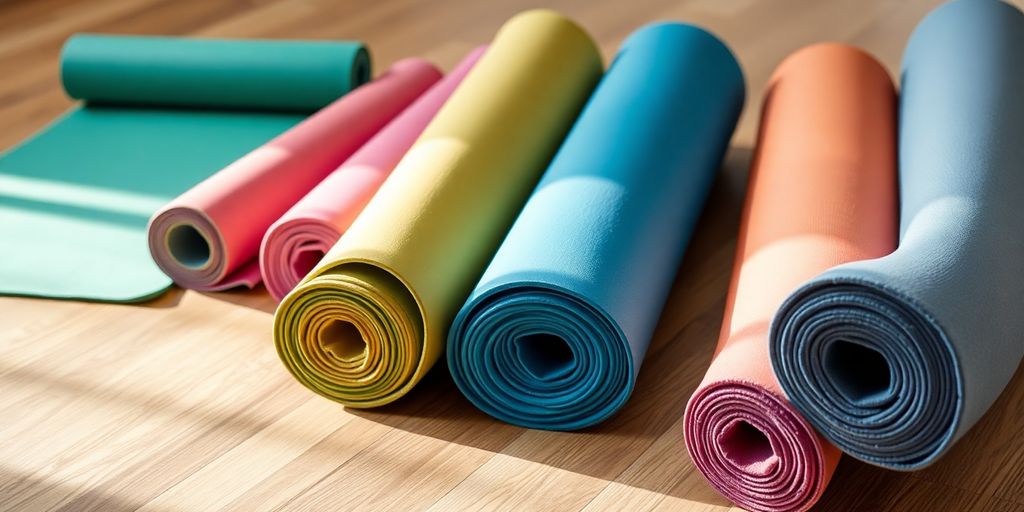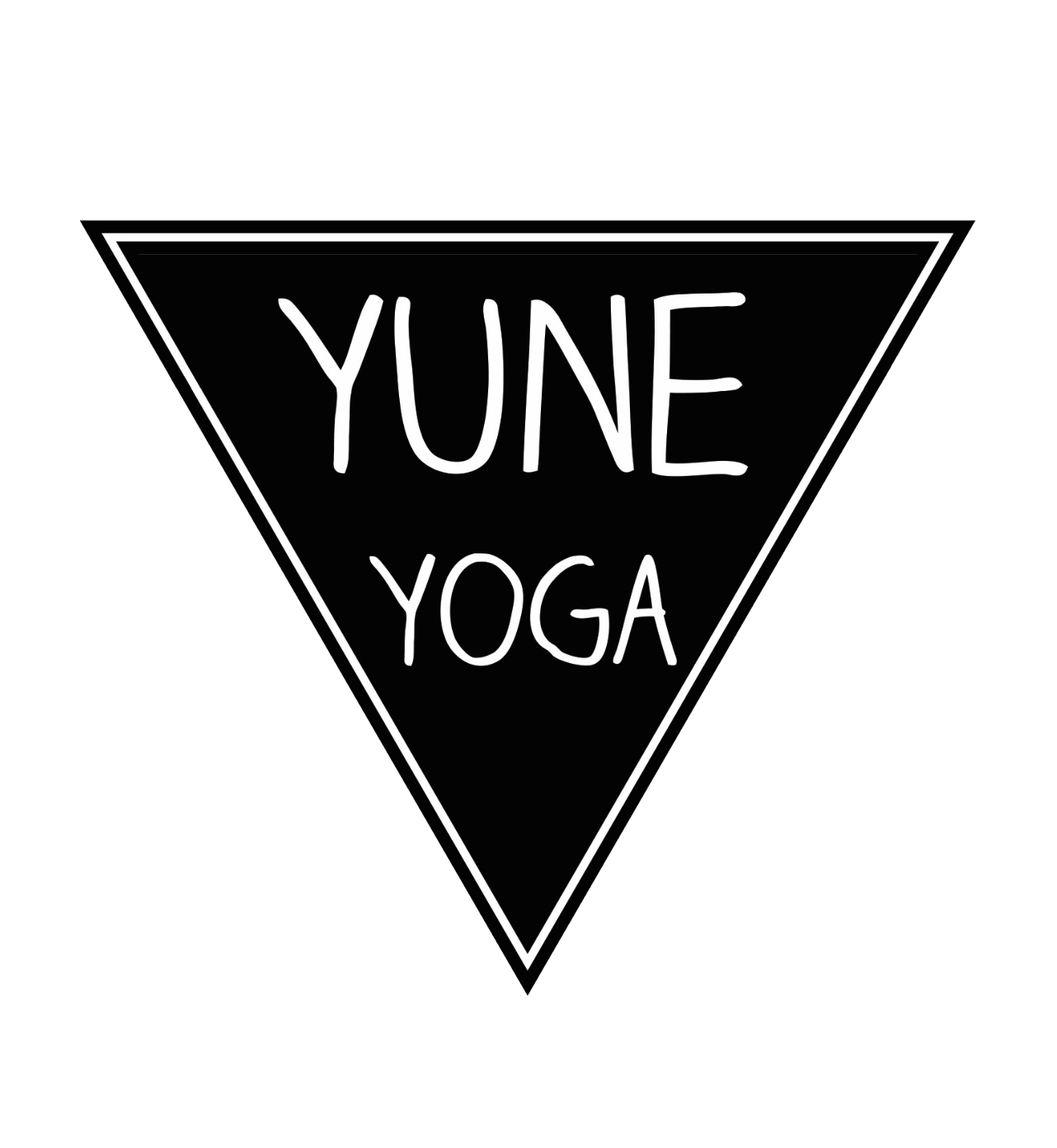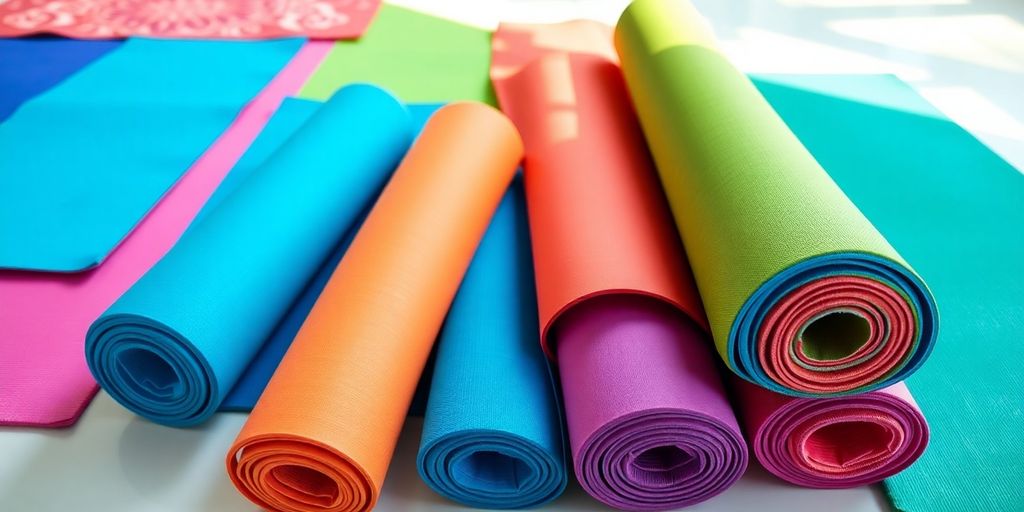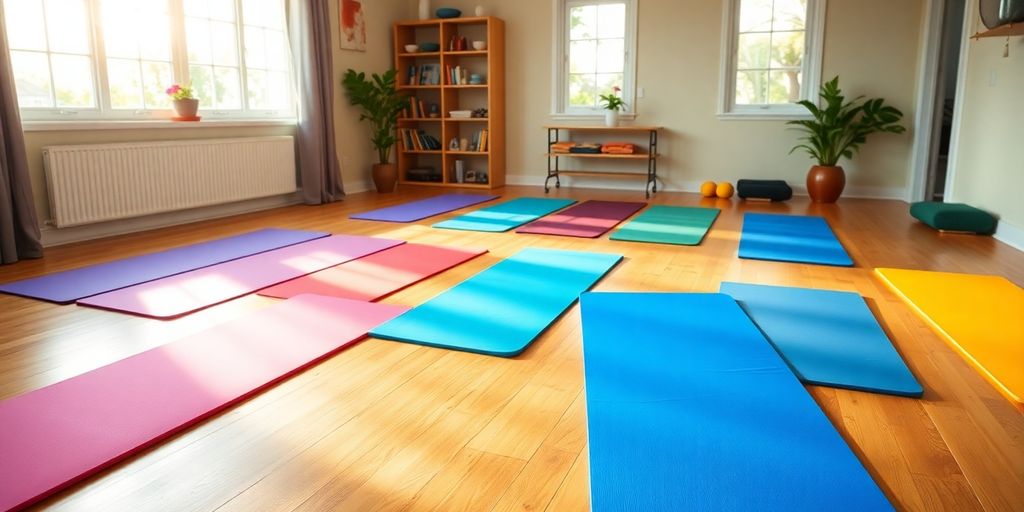
The Ultimate Guide to Choosing the Best Yoga and Pilates Mats for Your Practice
Picking the right yoga or pilates mat can really change your workout game. It's not just about having something to stand on; a good mat offers comfort, support, and grip, which are all super important for getting your poses right and avoiding any slips. Whether you're a yoga newbie or a pilates pro, this guide will walk you through everything you need to know to choose the best mat for your practice.
Key Takeaways
- A quality mat should offer the right balance of comfort and support for your joints.
- Look for mats made from eco-friendly materials if sustainability is important to you.
- Consider the thickness of the mat based on your practice style and personal comfort needs.
- Grip and texture are crucial to keep you steady during poses and exercises.
- Research different brands to find a mat that fits your budget and style preferences.
Understanding The Importance Of Yoga And Pilates Mats
Key Benefits Of A Quality Mat
A good mat is more than just a piece of rubber or foam between you and the floor. It’s your personal space, your sanctuary, and a critical tool in your practice. A quality mat offers cushioning, which is essential for protecting your joints during various poses. It also provides stability, helping you maintain balance, especially in challenging postures. Plus, a dedicated mat means you have a clean, defined area to practice, free from the germs and sweat of shared mats.
How Mats Enhance Your Practice
Mats are not just about comfort—they’re about improving your overall experience. They offer a non-slip surface, which is crucial for maintaining poses without the fear of slipping. This stability can boost your confidence, allowing you to focus more on your poses and less on the ground beneath you. Additionally, a good mat can help you transition smoothly between poses, making your practice more fluid and enjoyable.
The Role Of Comfort And Support
Comfort and support are at the heart of any good mat. A mat with the right amount of cushioning can make a world of difference, particularly during longer sessions. It helps reduce strain on your joints, making your practice more comfortable and reducing the risk of injury. Moreover, the comfort of your own mat can enhance your mind-body connection, signaling it's time for yoga or Pilates, which can help you ease into your practice more effectively.
Choosing The Right Material For Your Mat
Eco-Friendly Options
When it comes to yoga and Pilates mats, the material you choose not only affects your practice but also the environment. Natural rubber and cork are top picks for those who prioritize sustainability. Natural rubber provides excellent grip and cushioning, but be cautious if you have a latex allergy. Cork mats are not only eco-friendly but also antimicrobial, which means they resist mold and mildew. They're great for hot yoga because the grip improves with sweat. However, they can be a bit heavier and more expensive.
Durability And Performance
The durability of your mat is crucial, especially if you practice regularly. PVC mats are known for their longevity and stickiness, making them a reliable choice for many. However, they aren't the most environmentally friendly. On the other hand, TPE (thermoplastic elastomer) mats offer a balance between eco-friendliness and durability. They're lightweight, flexible, and provide decent grip, making them a popular choice for many practitioners.
Material Types Explained
Here's a quick rundown of common mat materials:
- PVC: Durable and offers great grip but not eco-friendly.
- Natural Rubber: Excellent grip and eco-friendly, but avoid if you have latex allergies.
- TPE: Lightweight and flexible, offering a middle ground between PVC and rubber.
- Cork: Eco-friendly and antimicrobial, ideal for sweaty practices but can be heavy.
Choosing the right material for your mat can significantly impact your practice. Consider your priorities, whether it's sustainability, grip, or durability, and select a mat that aligns with your needs.
Evaluating Thickness And Cushioning

Impact On Joint Support
When it comes to yoga and Pilates, the thickness of your mat can make a big difference for your joints. Thicker mats, generally around 1/4 inch or more, offer greater cushioning, which is crucial for protecting sensitive joints during floor exercises. This is especially beneficial for those who have knee or elbow issues. On the other hand, thinner mats, like those measuring 1/8 inch or less, provide a firmer surface that can help with stability and balance, which is great for standing poses or more dynamic movements.
Choosing Based On Practice Style
The type of practice you engage in should guide your choice of mat thickness. For restorative yoga or Pilates, where poses are held longer and comfort is key, a thicker mat can be more comfortable. If you're into a more vigorous style, like Vinyasa or Ashtanga, a thinner mat might be more suitable because it allows for better floor contact and stability. Here's a simple guide:
- Restorative Yoga/Pilates: 1/4 inch or thicker
- Vinyasa/Ashtanga Yoga: 1/8 inch to 1/4 inch
- Travel/Portable Practice: 1/16 inch to 1/8 inch
Personal Preference Considerations
Ultimately, personal preference plays a significant role in choosing the right mat. Some practitioners prefer the feel of a softer, cushioned mat, while others might opt for a firmer surface. Consider how you feel during your practice—do you crave more support, or does a firmer mat help you feel more grounded? Testing different mats can help you find the perfect fit.
Finding the right mat is a personal journey. It's about what feels best under your feet and supports your practice the way you need it to. Don't be afraid to try a few before settling on the one that feels just right.
Finding The Perfect Grip And Texture
Non-Slip Features
When you're in the middle of a challenging yoga pose, the last thing you want is to slip. Non-slip features are super important for safety and stability. A mat with a good grip can make all the difference. Look for mats with textured surfaces that enhance traction, especially if you tend to sweat a lot during practice. The Manduka PRO yoga mat is highly recommended for its stability and comfort, making it a favorite among many yoga instructors.
Surface Textures For Different Practices
The texture of your mat can significantly affect your practice. Smooth mats might feel nice underfoot, but they can be slippery, especially in hot yoga classes. Textured mats, on the other hand, offer better grip. Think about what kind of yoga you practice. If you're into Vinyasa, which involves a lot of movement, a textured surface can help keep you grounded. For gentler practices, a smoother mat might be more comfortable.
Maintaining Grip Over Time
No one wants a mat that loses its grip after a few sessions. To keep your mat in top condition, regular cleaning is crucial. Use mild soap and water, and avoid harsh chemicals that can degrade the material. Store your mat in a cool, dry place to prevent moisture buildup, which can affect its grip. Over time, even the best mats may wear down, so be prepared to replace your mat when it starts to lose its stickiness.
A yoga mat's grip is like a trusty friend, keeping you steady and focused during your practice. Maintaining it well ensures your safety and enhances your overall experience.
Selecting The Ideal Size And Style
Standard Vs. Large Mats
When it comes to choosing a yoga mat, size is a big deal. A standard mat usually measures about 24 inches in width and 68 inches in length, which works for most people. But if you're taller or like to really stretch out, a large mat might be more your speed, offering widths of 30 inches or more and lengths over 72 inches. A bigger mat gives you more room to move, which is great for dynamic yoga styles like Vinyasa.
| Feature | Standard Mat | Large Mat |
|---|---|---|
| Width | 24 inches | 30+ inches |
| Length | 68 inches | 72+ inches |
| Cushioning | Standard | Enhanced |
Designs That Inspire
The design of your mat can really set the mood for your practice. Bold colors can give you energy, while softer tones might help you relax. Some mats even have intricate patterns that can make your practice more visually interesting and motivating. Whether you're into vibrant hues or calming pastels, picking a mat that you find visually appealing can make a big difference.
Portability And Storage Options
If you're taking your mat on the go, you'll want to think about how easy it is to carry and store. Here are some things to consider:
- Weight: Lighter mats are easier to lug around, especially if you're walking or biking to your class.
- Rollability: Mats that roll up easily are a breeze to pack away.
- Storage Space: Make sure you've got a spot to keep your mat when it's not in use. Some mats come with straps or bags that make storing and carrying them a snap.
A good yoga mat should feel comfortable, have a good grip to stop slipping, and be easy to clean. It should also support your body during different poses.
In summary, picking the right size and style for your yoga mat is all about understanding what you need for your practice. Whether it's the extra space of a larger mat or a design that inspires you, the right choice can make your practice more enjoyable and effective. Consider options like the Pagoda Yoga Mat for a durable and eco-friendly choice that offers excellent comfort and stability. Happy practicing!
Top Brands And Recommendations
Popular Brands Among Practitioners
When it comes to yoga mats, some brands have really stood out among practitioners for their quality and reliability. Manduka is a favorite, especially their PRO series, which is known for durability and comfort. Then there's Lululemon, offering mats like The Mat 5mm, which balances cushioning and grip perfectly. JadeYoga focuses on natural rubber mats, providing excellent grip with options like the Harmony Mat. And don't forget Gaiam, which offers a variety of budget-friendly options without compromising on quality.
Budget-Friendly Choices
If you're on a budget but still want a reliable mat, consider these options. The Gaiam Performance Dry-Grip mat offers good traction at a lower price. There's also the Yoga Accessories 1/4" Extra Thick Deluxe Yoga Mat, which is a great bargain for various practices. BalanceFrom is another brand known for providing reliable mats that are easy on the wallet, ensuring you don't have to sacrifice quality for cost.
Luxury Mats For Advanced Users
For those who have been practicing for a while and want to invest in a luxury mat, the Manduka PROlite is often praised for its durability and comfort. The Yoloha Original Cork Yoga Mat offers a unique texture and grip, making it ideal for advanced poses. Lastly, Liforme mats are eco-friendly and popular among professionals for their alignment guides and grip.
Finding the right yoga mat is more than just about brand names; it's about what fits your practice style and personal needs. Whether you're a beginner or an advanced yogi, there's a perfect mat out there for you.
For those looking for something extra special, the Galatea Yoga Mat by Yune Yoga is an excellent choice. It's extra thick for comfort and stability, combining style and quality, perfect for anyone who wants to enhance their yoga flow.
Maximizing The Benefits Of Your Mat

Cleaning And Maintenance Tips
Taking care of your yoga or Pilates mat is more than just about keeping it looking nice. Regular cleaning ensures your mat stays hygienic and maintains its grip. After every session, give your mat a quick wipe with a damp cloth to remove sweat and dirt. For a deeper clean, use a mild soap or a special mat cleaner weekly. Make sure your mat is completely dry before rolling it up to prevent any mold or odor.
How Often To Clean Your Mat:
- After every use: Quick wipe-down to maintain hygiene.
- Weekly: A thorough cleaning with soap or mat cleaner.
- Monthly: Inspect for wear and tear, and clean more deeply if needed.
Your mat is your practice space. Keeping it clean not only prolongs its life but also enhances your practice experience.
Integrating Accessories
Enhance your practice by incorporating accessories that complement your mat. Here are some essentials:
- Yoga Towels: Provide extra grip, absorb sweat, and keep your mat clean.
- Yoga Blocks: Assist with balance and support in various poses.
- Straps: Help in stretching and achieving deeper poses.
These accessories can make your practice more comfortable and effective, especially if you're using a PDX Carpet Yoga Mat with its non-slip design and double thickness for added comfort.
Understanding Your Practice Needs
Choosing the right mat is about more than just aesthetics. Consider what you need for your specific practice:
- Joint Support: If you have sensitive joints, a thicker mat might be beneficial.
- Practice Style: Different styles of yoga like Vinyasa or Restorative may require different mat features.
- Personal Preference: Ultimately, your comfort and personal style should guide your choice.
Remember, your mat is a foundation for your practice. Finding the right one can significantly enhance your overall experience.
Wrapping It Up: Your Path to the Perfect Mat
Alright, so there you have it. Picking the right yoga or Pilates mat isn't just about grabbing the first one you see. It's about finding that sweet spot where comfort, grip, and style meet. Whether you're just starting out or have been at it for years, the right mat can make all the difference. Take your time, try a few out if you can, and don't rush the decision. After all, this mat is going to be your partner in practice. So, choose wisely, and happy stretching!
Frequently Asked Questions
Why do I need a special mat for yoga or Pilates?
A special mat provides the right comfort and grip, helping you perform poses safely and effectively.
What should I look for in a yoga or Pilates mat?
Key things to consider are thickness, grip, durability, and the material of the mat.
How often should I clean my yoga or Pilates mat?
It's best to clean your mat after each use to keep it fresh and extend its lifespan.
What's the difference between thick and thin mats?
Thicker mats offer more cushioning, great for comfort, while thinner mats provide better stability for balance.
Are there eco-friendly options for yoga mats?
Yes, many mats are made from sustainable materials, which are better for the environment.
Can a Pilates mat be used for yoga?
Yes, many Pilates mats work well for yoga too, but check if the grip and thickness suit both practices.


